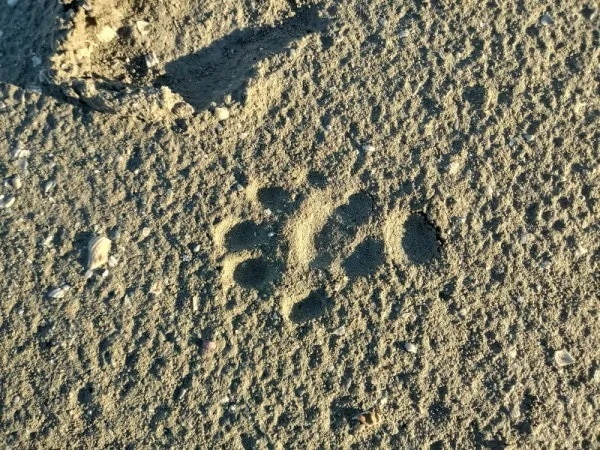According to the AHSA environmental friends group active in the south of Alicante, the first specimen of Lutria lutria, an otter, was identified in the area in April 2017 in the El Hondo natural park, since when, the otter population has been strengthening, identified through the presence of droppings, in addition to the control by camera trapping of specimens and even adults with young.
Apart from the observations in El Hondo, the records of the species have been very scarce in the area, despite the fact that there are other nearby wetlands that offer optimal habitat for it. In fact, there is only two cases since 2017 confirmed, the first in February 2021 next to the azarbe de Pineda and the Hondo de Amorós in the municipality of San Fulgencio, the second, sadly, a dead otter at the very gates of El Hondo, on the CV-851, known as the Vistabella road.
An azarbe is the ditch that transports excess water from irrigation. It is a traditional element of the orchard countries.
Last February, during a visit organized by AHSA and Talallola to the salt mines of Santa Pola, on the occasion of the International Day of Wetlands, otter excrement was detected on the shores of one of the azarbes that came from Los Carrizales, across this wetland.
During the following weeks, more traces of otter were found in the same area, both depositions and numerous footprints, which could show that the species has settled in this sector of the Salinas.
On the other hand, also during the month of February, various otter droppings were found in the azarbe de Pineda in the municipality of Dolores. The Pineda azarbe is one of the few main azarbes in the Vega Baja that maintains its natural and uncemented shores, although it is highly degraded by the dumping of rubbish, mainly plastic containers.
In addition to the interest in confirming the expansion of the otter in the south of Alicante, it is worth highlighting the important role played by the network of azarbes, not only as an ecological connector between the different wetlands or for feeding their waters to some of the most important South Alicante wetlands if not because of the natural interest of its own riverbeds, values that the abandonment of traditional irrigation and the arrival of agro-industry in the south of Alicante are endangering.





